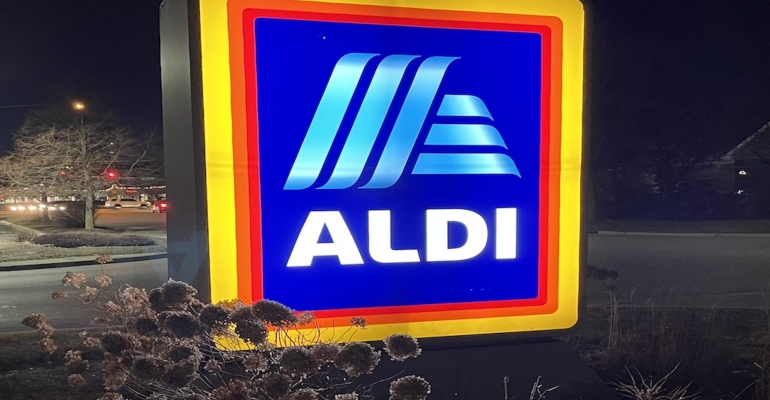TOP TAKEAWAYS
- Aldi has been present in the U.S. since 1976, and is the 13th largest grocery chain with around $27 billion in sales (2.1% share of the grocery retail market)
- By comparison at the banner level, Dollar General has a 2.4% share, Target has a 2.7% share, and Stop & Shop has a 1.5% share
- Banner leaders are Walmart Supercenters (18% grocery market share), Costco (9% share), Walgreens and CVS (both at 8.5% share), and Kroger (5% share)
Aldi has been one of the fastest-growing grocers in the U.S. and had already announced an aggressive expansion plan for the year that includes adding 120 new stores by year’s end. Now, with the company’s recent acquisition of Winn-Dixie and Harveys Supermarkets from Southeastern Grocers, Aldi will add an additional 400 stores to that count.
What do these acquisitions mean for Aldi, its competition, and for consumers? That’s the focus of a new report from dunnhumby, which additionally looks at fellow discount grocer Lidl’s “stalled expansion.”
The report further examines the different trajectories between the two German retailers in the U.S., who globally are nearly equal in size.
By looking into the dunnhumby retail preference index — a database of customer perceptions consisting of about 70,000 customers — as well as other insights and research about Aldi, the report found that Aldi’s “edge in both base prices and elements of store experience, better ability to deliver on assortment relevance — along with superior natural/organic variety — gives them a stronger offering on what matters most to grocery shoppers.”
Other key highlights from the report include:
- Lidl has had a less favorable environment than Aldi, which had an existing foothold in the U.S. with a dominant market share
- Lidl chose to launch in Aldi’s east coast footprint, making it harder for it to differentiate on its core competency of base prices and unique assortment of private brands
- The acquisition of the very different Winn-Dixie is surprising given Aldi’s already dense store base
- Aldi still doesn’t come close to matching Publix’s 876 stores in Florida — analysts say the company will need more stores if it wants to capture that market
- The typical shopper visits three or four different retailers in a month, which is why Aldi isn’t just expanding one banner, but expanding their management of other types of grocery offerings too
Aldi’s acquisition of Winn-Dixie may mean shoppers in the southeast will have access to more savings, product options, and omnichannel shopping experiences. It should also raise the alarm for competitors according to the report.
“Retailers everywhere should be examining their private brand, pricing, assortment, digital and real estate strategies in response to Aldi’s move,” the report said. Aldi has grown more than any of the 40 largest grocery retailers in the U.S. at 14% (3-year CAGR), with Costco in second at 13%.





